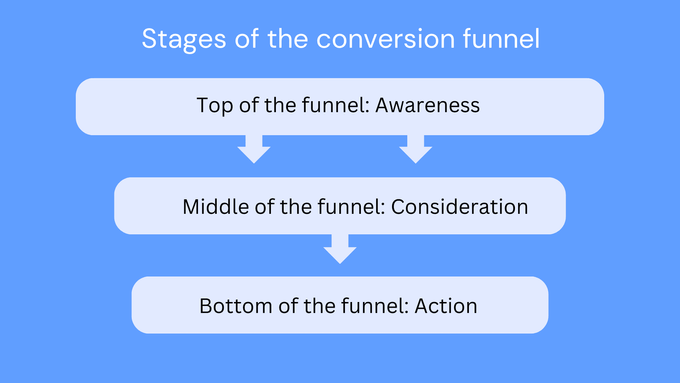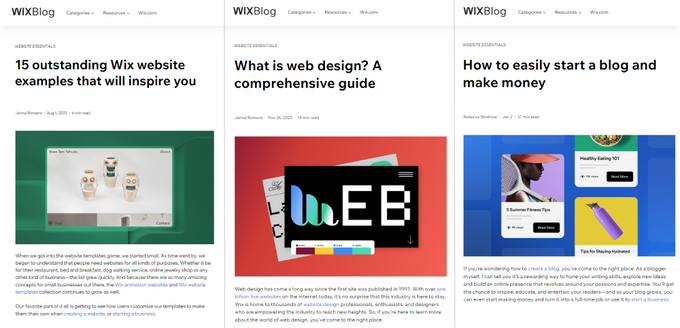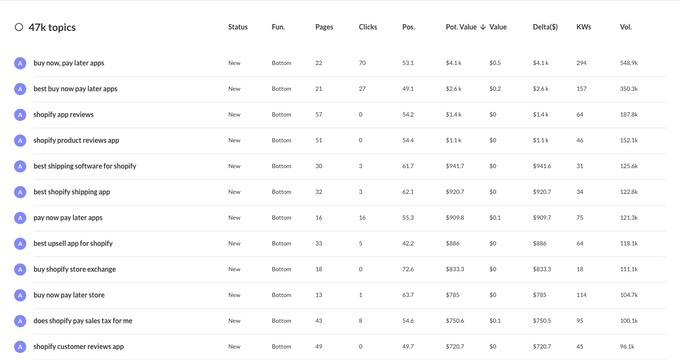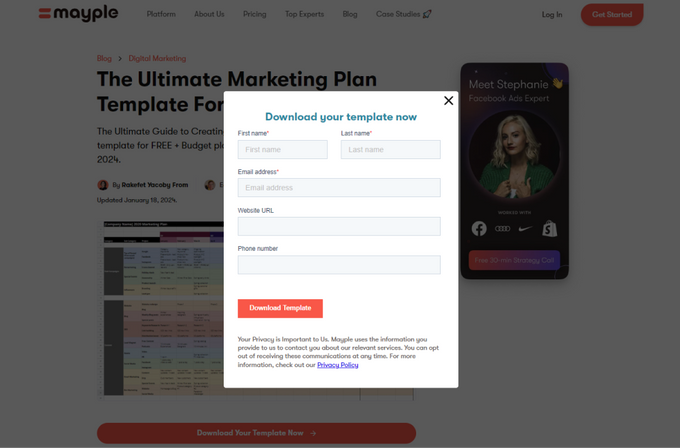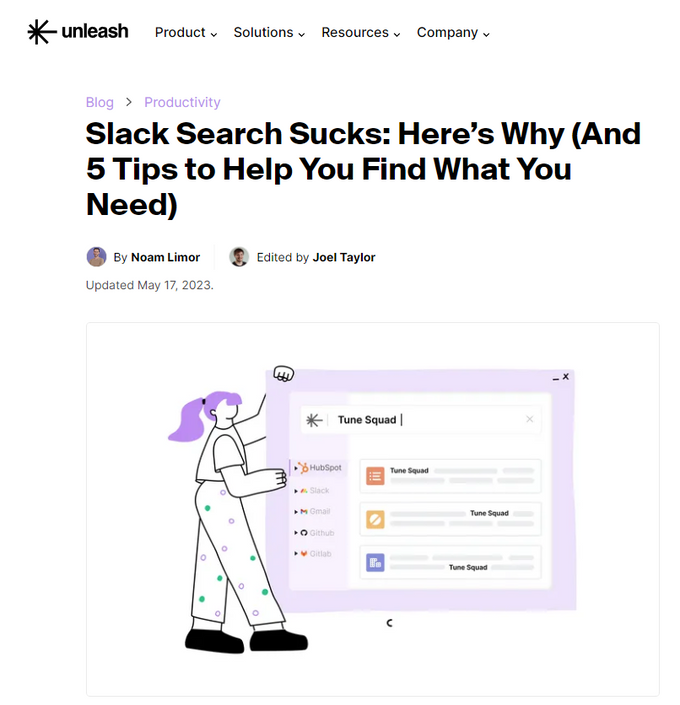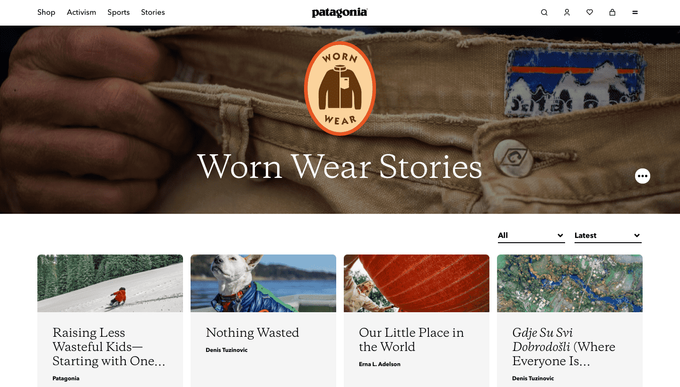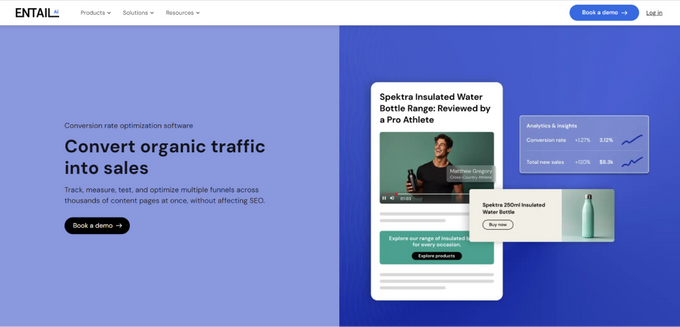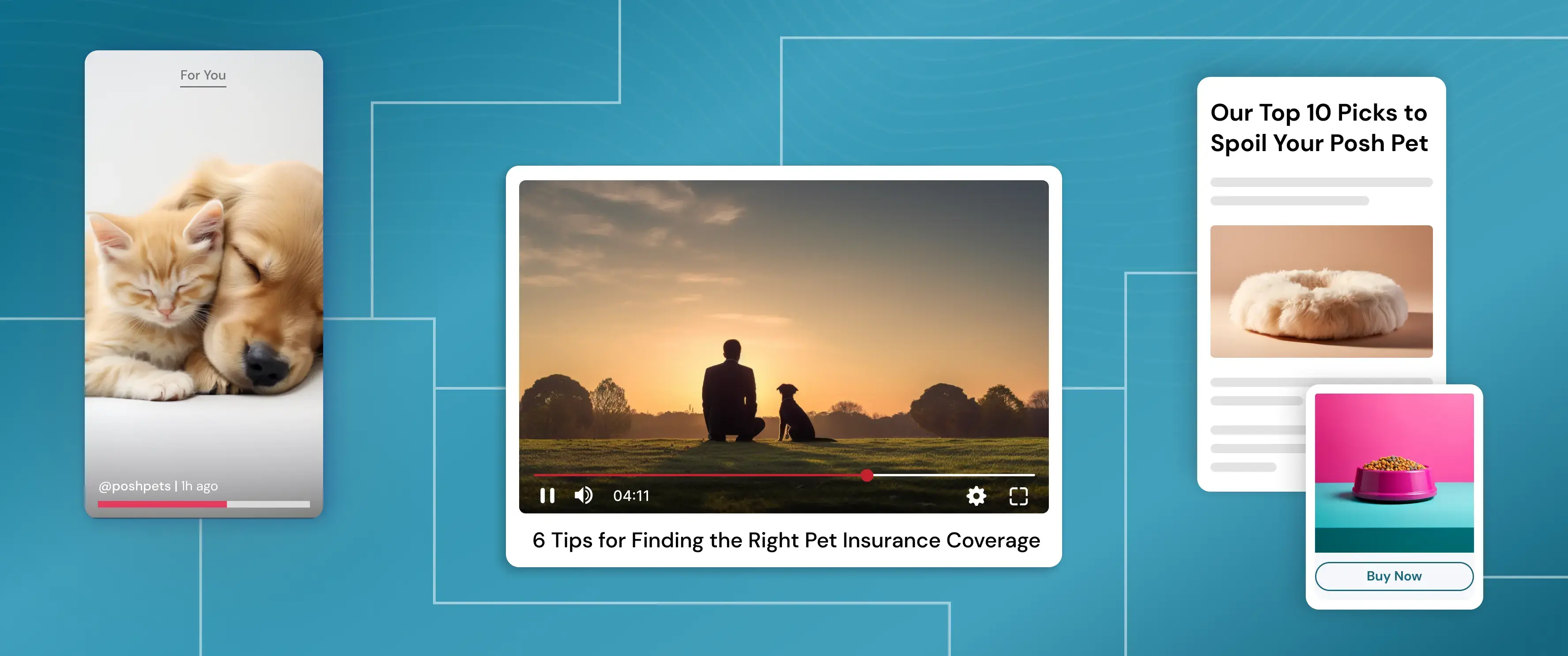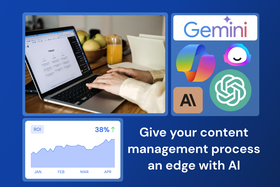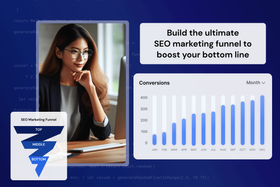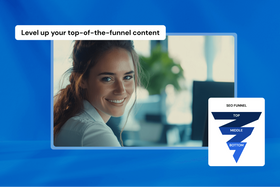Creating content for the SEO conversion funnel: A complete guide to every stage
Find out how to create content to guide your customers from the top to the bottom of the SEO conversion funnel.
Updated April 11, 2025

The average attention span of an internet user is around 8 seconds. So investing in keeping your customers interested in your product or service is more important than ever. The key is guiding them through content designed for each stage of their journey—from initial brand discovery to informed product research to purchase decisions.
By understanding the mindset and questions of visitors at each funnel stage, you can spark and re-spark interest with the right information and messaging every step of the way.
What's in this guide
- The conversion funnel explained
- TOFU: Making customers aware
- MOFU: Establishing trust
- BOFU: Turn evaluation into a decision
- What to consider at each stage
- How Entail provides unique content funnel solutions
- Ace content to convert customers
The conversion funnel explained
Before diving into content creation, let’s briefly recap how the SEO marketing funnel works. Unlike paid channels, where you directly purchase exposure, organic SEO relies on delivering valuable information to users at various stages of their journey.
The conversion funnel comprises three stages (awareness, consideration, and action), and a user has a unique goal at each stage. This means that the content you provide should be customized to that goal in order to encourage users to move down the funnel toward conversion.
» Explore advanced conversion funnel optimization strategies to boost sales.
How to map content to each funnel stage
- Identify relevant topics: Analyze your niche and brand to identify topics related to your products or services.
- Categorize by funnel stage: Assess each topic's intent. High-intent searchers like "dog trainers near me" would be part of the bottom-of-the-funnel stage, while "why is my new puppy misbehaving" is at the top of the funnel.
- Define conversion potential: Estimate the likelihood of someone converting after consuming the content.
Keep in mind
Bottom-of-the-funnel content generally offers higher conversion potential when it comes to making a direct sale.
READ MORE: The 5 stages of the marketing funnel explained
TOFU: Making customers aware
The top of the funnel marks the start of a customer's journey to conversion and targets the awareness stage. The idea at this point is to spark interest or offer a solution to a problem.
Suppose a new mother is looking for "must-have items for my baby," and your company specializes in baby strollers. In that case, it's important to create content that answers her initial search query and gently highlights why she might require a stroller.
Remember
Customers might be asking, "Who are you, and why should I care?" so the content you create at the top of the funnel needs to provide users with a reason to remember you.
Craft content in the TOFU stage by:
1. Identifying relevant topics
Conduct keyword research to uncover topics that align with your target audience's interests and pain points. Focus on informational keywords that indicate a user's intent to learn and explore.
For example, the well-known website builder Wix targets top-of-the-funnel searches like "what is web design," "how to start a blog," and "website examples."
» Learn how to build a content marketing strategy.
2. Creating engaging content
Develop high-quality content that provides valuable information and captivates the user's attention to remind them why they should be aware of you. Think of it as taking someone out to coffee and getting to know them. You need to aim to educate rather than sell. Content at this stage might include:
- Guides and articles: Provide education and help build awareness. These also help position your brand's topical authority.
- List posts: Easy to scan and grab attention, drawing the user in.
- Infographics: Provide simplified yet important information.
- Videos: A great way to boost engagement, specifically through videos on social media.
3. Optimize for search
Incorporate relevant keywords naturally throughout your content and optimize meta tags, headings, and all alt tags. Make your content easy to find and navigate for both users and search engines.
Using content strategy software that tracks keyword clusters and maps content according to search intent can help streamline the process and guarantee optimized search results.
4. Encourage further exploration
Include internal links to related content to encourage users to dive deeper into your website. You can also offer downloadable resources in exchange for email sign-ups to help nurture leads.
MOFU: Establishing trust
In the middle of the funnel, your focus shifts to nurturing leads and guiding them toward a purchasing decision.
Here, a new mother might be searching for the "best travel strollers" or "the importance of a lightweight stroller." At the middle of the funnel, your content should provide a solution that will ultimately encourage a conversion.
Here's how to create compelling MOFU content:
1. Address specific pain points
Identify common challenges or questions your audience faces during the consideration phase. Develop content that provides in-depth solutions to demonstrate your expertise and unique value—like this example from Unleash.
2. Use social proof
Incorporate feedback from existing customers to build credibility and trust with your potential customers. By highlighting real-world examples, you can showcase the benefits of your products or services. This content includes reviews, customer testimonials, and case studies. Patagonia does this well with their Worn to Wear Stories.
3. Optimize for conversions
Include clear calls to action throughout your content that encourage users to take the next step, whether it's signing up for a free trial, requesting a demo, or downloading a product guide. It is important to make it as easy as possible for users to engage with your brand.
» Discover how to optimize your site for conversions.
4. Provide educational resources
Focus on providing valuable insights and actionable advice that moves users closer to conversion. Educational content might be webinars and demo videos.
Slack highlights the usefulness of the platform in an engaging and informative way.
BOFU: Turn evaluation into a decision
At the bottom of the funnel, your objective is to convert leads into customers or clients. At this stage, the visitor has evaluated the options and decided a particular product is the right choice for them.
In the case of our new mother, she may have found the stroller she is looking for but might have some lingering reservations about whether she should make the purchase. Content at the bottom of the funnel needs to address any final questions and nudge a customer to convert.
» Discover actionable strategies to convert blog traffic.
Here's how to create persuasive BOFU content:
1. Highlight product benefits
Showcase the features, benefits, and unique selling points of your products or services. Use persuasive language and visuals to emphasize value and address any remaining objections or concerns. Airbnb incorporates user-generated content to demonstrate the unique stays and experiences that they offer.
2. Offer incentives or discounts
Provide special offers, discounts, or incentives to encourage immediate action and incentivize conversions. Limited-time promotions or exclusive deals can create a sense of urgency and drive conversions.
3. Streamline the conversion process
Optimize your landing pages and checkout process to minimize friction and make it easy for users to complete their purchase. Remove distractions and focus on guiding users toward the desired action.
4. Follow up
Implement remarketing campaigns to re-engage users who have shown interest but haven't converted yet. Use targeted ads and personalized messaging to remind them of the value of your offerings and encourage them to take the final step.
» Discover the role of paid search in the conversion funnel
What to consider at each stage
At each stage of the conversion funnel, there are various strategies for creating content that should be considered.
- Content quality: Invest in high-quality, authentic content regardless of the stage. Quality content converts and should be your top priority.
- Search intent: Align your content with specific search queries to directly link to individuals in their purchasing journey.
- Calls to action (CTAs): Use relevant CTAs that correspond to the funnel stage and user journey.
- Multi-channel approach: Consider using social media and other channels to promote your content and maximize reach.
Track and analyze performance
Monitor content performance across metrics like page views, click-through rates, and conversion rates to analyze and optimize the user journey. Utilize tools like Google Analytics to gain insight into user behavior and refine your funnel, taking the guesswork out of creating high-converting content.
» Learn more about key metrics and KPIs for each stage of the SEO funnel.
Consistently optimize your content
Creating new articles, guides, and other assets will drive different metrics based on where they fall in the buyer's journey. You can double down on what resonates by monitoring the page views, clicks, shares, and conversions per piece. For example, an outdated but link-worthy beginner's guide may drive lots of top-of-the-funnel traffic that falters down the line.
Refreshing the post breathes new life into an asset already succeeding at the top of the funnel. Applying this principle of continual optimization means you output less new content over time while extracting more value from evergreen content already attracting interested visitors.
How Entail provides unique content funnel solutions
A number of challenges can occur when creating content for each funnel stage. Competition for rankings, algorithm updates, inefficient keyword research, technical SEO issues, and quality control can all lead to missed conversion opportunities.
Entail AI specializes in supporting clients through every conversion funnel stage by following a strategic approach that prioritizes organic content distribution over paid marketing in the top- and mid-funnel levels. By testing content at a lower distribution cost, businesses can maximize reach while minimizing expenses, particularly in the upper stages of the funnel.
Ace content to convert customers
Strategic content creation is important for smoothly guiding visitors through the conversion funnel stages. As consumers shift from awareness to consideration and finally conversion, meet visitors where they are with relevant, valuable information.
In mastering funnel-aligned content, you transform curious visitors into customers through personalized digital experiences that resonate.
FAQs
What is the SEO conversion funnel?
The SEO conversion funnel is a framework that maps out the journey of potential customers from discovering a brand through organic search (SEO), not paid channels, to making a purchase decision. It consists of three main stages: awareness, consideration, and action.
What are the stages of the SEO funnel?
The stages of the SEO funnel include:
- Top of the funnel (TOFU): Focuses on generating awareness
- Middle of the funnel (MOFU): Aims at establishing trust and guiding users toward conversion
- Bottom of the funnel (BOFU): Turns awareness and considerarion into conversions
What is conversion funnel optimization?
Conversion funnel optimization is the process of refining content and strategies at each funnel stage to meet visitor goals and queries. It focuses on engaging users with relevant information and messaging to increase conversion chances by creating a seamless and compelling journey from awareness to purchase.

